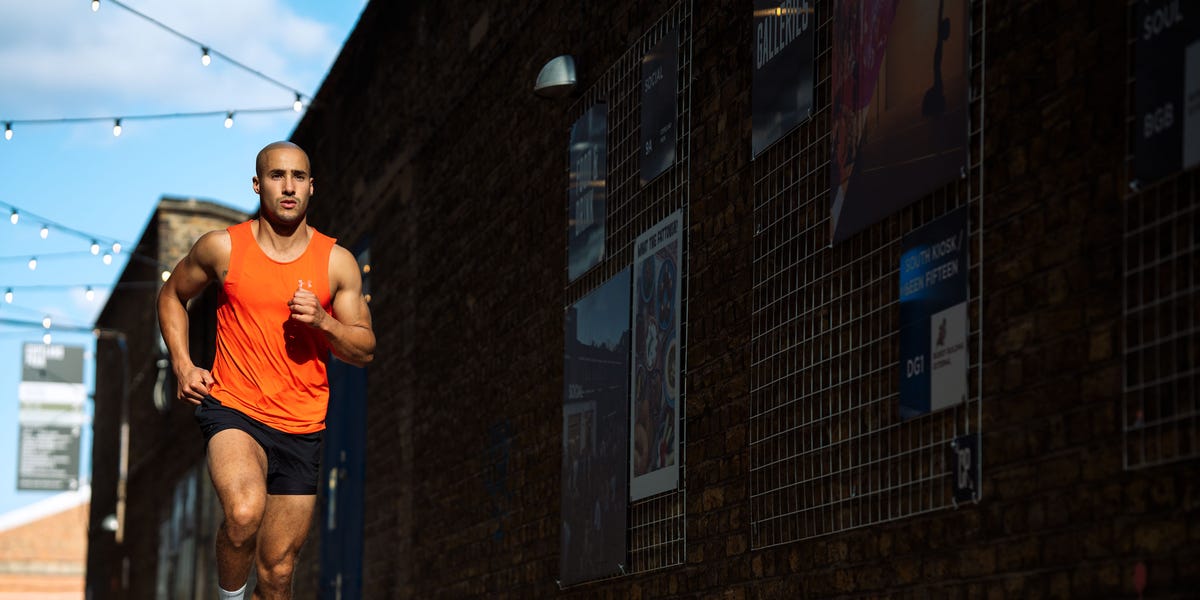6 steps to become a stronger, better and faster runner
Many of us start running just for fun and fitness. But as you gain more experience, it is natural to start thinking about the clock and how to go faster.
Unfortunately, just blasting mile after mile won’t magically help you accelerate. But there are some training techniques that you can incorporate into your running program.
We met the performance coach, co-founder of Track Life LDN and Under Armor ambassador Omar Mansour to find out how we can all start chasing after these PBs.
1. Train regularly
“I always advise my runners to look at their training plan and consider whether they are consistent or sporadic because if you don’t tick the basics you aren’t setting yourself up for long term success. If you run regularly for a week, for example, and then miss a few weeks, you cannot effectively judge your level of fitness or how quickly you can improve. So the first thing to look at is whether you run a regular two, three, or four times a week – then you can start focusing on running faster.
2. Shock your body to run faster
“Once you’ve run for a while – just doing regular runs – you’ll hit a plateau. In order to cross this plateau, you will need to adapt your training and shock your body with a higher intensity. Interval workouts such as tempo workouts, fartlek races, or hill sprints will expose your legs and body to a faster pace.
“My favorite interval session is a progressive 400m track. You start by running the first three 400m intervals at a 10km pace, which should be relatively comfortable. Then you run the next three 400m intervals at a 5km pace and the next three at a one mile pace. For the last three, you run at a pace of less than a kilometer. It’s brutal, but you’ll feel like you’re on fire.
3. Don’t miss the leg day at the gym
“Strength training is the essential part of any running regimen. If you’ve reached a point in your run where you’re looking for those marginal gains and how to drop a few minutes off your MUAC, strength and conditioning is one of the best ways to become a faster, stronger runner. We put a lot of force into each stride when we run, so if you can make yourself stronger and more impact resistant through weight training, you will reduce your risk of injury and be able to run more efficiently and produce more power on the floor.
“When we run we spend a lot of time on one leg, so start by focusing on the single leg movements to build strength. Try exercises such as single-leg deadlifts, Bulgarian split squats, and step-ups. You will be surprised how many runners get on a box without any weight and find that their knees and ankles are all over the place. Once you have mastered these basics, you can then engage in squats, Romanian deadlifts, and larger, more functional movements.
4. Find your favorite pre-race fuel
“Most runners determine their ideal diet through trial and error, but one of the biggest mistakes new runners make is not eating at all before exercising – by doing this you won’t no fuel to keep going. Personally my favorite pre-race snack is either toast in the attic or a bagel topped with peanut butter and banana. I don’t like to feel heavy when I run and I need a some time to digest the food so sometimes even a single slice of bread in the morning is enough, then I will come back for a hearty breakfast after the race.
5. Be flexible with your training plan
“In order not to hurt yourself, you need to be in harmony with your body and aware of its limitations. This includes recognizing when you’ve had a hard day and if you are experiencing other stressors that could impact your performance so that you can be versatile and tailor your plan based on how you are feeling – maybe. this high intensity interval session can wait a few days? A smart runner is someone who listens to their body when they have a little problem and decides to see a physiotherapist before the situation gets worse, instead of breaking up a tough session anyway.
6. Choose your equipment carefully
“As running coaches, we always preach about the marginal gains of 1%. Will wearing a sweat-wicking t-shirt suddenly cut your 5K time by 15 minutes? Probably not. But could he potentially lose a minute or two in a long distance race? Potentially, because the technology wicks away sweat, which means it will keep you lighter, cooler and more comfortable, allowing you to run faster.
“Personally, I like to switch between two different pairs of running sneakers. For my track sessions and tempo sessions, I run in the Under Armor Velocity Flow – these are my fast shoes. For all runs between 30 minutes and an hour, I run in the new Under Armor HOVA Mega 2 Clone – these are my cushioned shoes for long distances. It’s about finding something that you feel comfortable in, because if you feel good during your workout and feel confident in what you run, then everything is designed to give you the best advantage for running fast and running hard. ‘
Under protection ‘s HOVR â„¢ Mega 2 Clone is now available, adapts to the shape of your foot for a smoother run, and connects to UA MapMyRun â„¢ for real-time Form Coaching.
This content is created and maintained by a third party, and uploaded to this page to help users provide their email addresses. You may be able to find more information about this and other similar content on piano.io







Comments are closed.